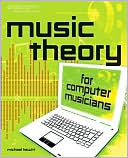Category Books
- Fiction Books & Literature
- Graphic Novels
- Horror
- Mystery & Crime
- Poetry
- Romance Books
- Science Fiction & Fantasy
- Thrillers
- Westerns
- Ages 0-2
- Ages 3-5
- Ages 6-8
- Ages 9-12
- Teens
- Children's Books
- African Americans
- Antiques & Collectibles
- Art, Architecture & Photography
- Bibles & Bible Studies
- Biography
- Business Books
- Christianity
- Computer Books & Technology Books
- Cookbooks, Food & Wine
- Crafts & Hobbies Books
- Education & Teaching
- Engineering
- Entertainment
- Foreign Languages
- Game Books
- Gay & Lesbian
- Health Books, Diet & Fitness Books
- History
- Home & Garden
- Humor Books
- Judaism & Judaica
- Law
- Medical Books
- New Age & Spirituality
- Nonfiction
- Parenting & Family
- Pets
- Philosophy
- Political Books & Current Events Books
- Psychology & Psychotherapy
- Reference
- Religion Books
- Science & Nature
- Self Improvement
- Sex & Relationships
- Social Sciences
- Sports & Adventure
- Study Guides & Test Prep
- Travel
- True Crime
- Weddings
- Women's Studies
Music Theory for Computer Musicians »

Authors: Michael Hewitt
ISBN-13: 9781598635034, ISBN-10: 1598635034
Format: Paperback
Publisher: Cengage Learning
Date Published: April 2008
Edition: (Non-applicable)
Author Biography: Michael Hewitt
Dr. Michael Hewitt was born in South Wales in the United Kingdom. He earned his bachelor of music degree at London University and a master's degree and doctorate at the University of North Wales, Bangor, where he specialized in musical composition. He is a classically trained musician, composer, lecturer, and author on musical subjects. He also writes classical scores as well as soundtracks for various television productions both at home and abroad. He is currently working as a music technology tutor at Coleg Harlech in North Wales.
Book Synopsis
Many DJs, gigging musicians, and electronic music producers understand how to play their instruments or make music on the computer, but they lack the basic knowledge of music theory needed to take their music-making to the next level and compose truly professional tracks. Beneath all the enormously different styles of modern electronic music lie certain fundamentals of the musical language that are exactly the same no matter what kind of music you write. It is very important to acquire an understanding of these fundamentals if you are to develop as a musician and music producer. Put simply, you need to know what you are doing with regard to the music that you are writing. Music Theory for Computer Musicians explains these music theory fundamentals in the most simple and accessible way possible. Concepts are taught using the MIDI keyboard environment and today?s computer composing and recording software. By reading this book and following the exercises contained within it, you, the aspiring music producer/computer musician, will find yourself making great progress toward understanding and using these fundamentals of the music language. The result will be a great improvement in your ability to write and produce your own original music!
Table of Contents
Introduction Chapter 1: Musical Sound Chapter 2: The Notes Chapter 3: The Major Scale Chapter 4: Rhythm, Tempo and Note Lengths Chapter 5: Score Editing Chapter 6: Intervals Chapter 7: Meter Chapter 8: Chords Chapter 9: The Natural Minor Scale Chapter 10: Melody and Motives Chapter 11: The Harmonic and Melodic Minor Scales Chapter 12: Augmented and Diminished Intervals and Interval Inversions Chapter 13: Chordal Inversions, Octave Doubling, and Spacing Chapter 14: Additive Rhythms Chapter 15: Expanding Your Knowledge of Keys Chapter 16: the Pentatonic Scale Chapter 17: Major, Minor, Augmented, and Diminished Triads Chapter 18: Chord Progressions and Root Movement Chapter 19: The Cycle of Fifths Chapter 20: The Seven Diatonic Modes Chapter 21: Chords of the Seventh Chapter 22: Exotic Scales Chapter 23: Complex Harmony Chapter 24: Arpeggiation Chapter 25: Intonation Chapter 26: Conclusion Appendix A: Scales Appendix B: Audio CD and Accompanying Text Sidebars
Subjects
 Music Books
Music Books  Music Instruction & Education
Music Instruction & EducationEntertainment
 Music Books
Music Books  Music Technology & Recording
Music Technology & RecordingEntertainment
 Music Books
Music Books  Music Theory & Composition
Music Theory & Composition
